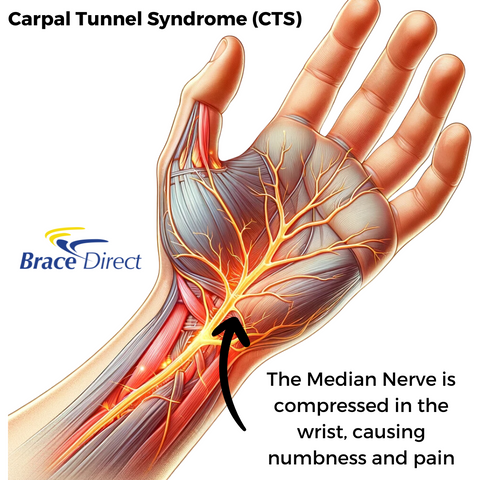9am - 5pm EST M-F
9am - 5pm EST M-F

Carpal tunnel syndrome (CTS) is a common nerve disorder affecting the wrist and hand, often caused by repetitive stress and pressure on the median nerve. This condition can lead to pain, numbness, and tingling in the hand and arm.

Keeping your wrists in a neutral, straight position reduces pressure on the median nerve. Avoid bending your wrists excessively while working or sleeping. Consider using ergonomic keyboards and mouse pads that promote a natural wrist position.
Frequent breaks during work can prevent excessive strain on your wrists. Stretch your hands and fingers, and perform gentle wrist exercises to maintain flexibility and reduce nerve compression.
Wearing a wrist brace, especially during activities that strain your wrist or while sleeping, can keep your wrist in a neutral position and relieve pressure on the median nerve. Brace Direct offers effective solutions such as the Carpal Tunnel Lycra Wrist Brace Support for daytime use and the Carpal Tunnel Wrist Brace Night Splint for night-time relief.
An ergonomic workspace can significantly reduce the risk of developing CTS. Position your keyboard and mouse to allow for a comfortable, neutral wrist position. Ensure that your chair and desk height don't force your wrists into awkward angles.
Regular hand and wrist exercises can strengthen the muscles around the carpal tunnel and improve flexibility. Gentle stretching can alleviate tension in the wrist and help prevent CTS symptoms.
By implementing these tips, including the use of specialized wrist braces from Brace Direct, you can effectively manage and reduce the risk of Carpal Tunnel Syndrome. Remember, early intervention and proper wrist care are key to preventing long-term discomfort and impairment.